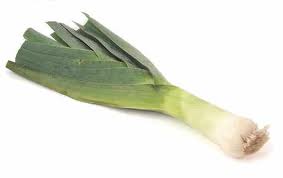 Leeks have been grown since ancient Egyptians times. Evidence of this early use can be traced to carvings, demonstrating that the leek has been part of the culinary world for at least 4000 years. The leeks historical significance is not limited to ancient Egypt. As the favorite vegetable of Nero, Romans often consumed this onion like vegetable in soups and broths. As the national symbol of Whales, the leek is certainly a versatile vegetable which is capable of being grown in a number of world climates. A favorite in French cuisine, you are sure to find many uses for this storied root. In addition to being a delicious vegetable, the juice of the leak has been used as a natural repellent for moths, inspects and moles.
Leeks have been grown since ancient Egyptians times. Evidence of this early use can be traced to carvings, demonstrating that the leek has been part of the culinary world for at least 4000 years. The leeks historical significance is not limited to ancient Egypt. As the favorite vegetable of Nero, Romans often consumed this onion like vegetable in soups and broths. As the national symbol of Whales, the leek is certainly a versatile vegetable which is capable of being grown in a number of world climates. A favorite in French cuisine, you are sure to find many uses for this storied root. In addition to being a delicious vegetable, the juice of the leak has been used as a natural repellent for moths, inspects and moles.
Key Nutrients
Leeks provide a high amount of folic acid, vitamin B6, vitamin C, manganese and iron. Leeks also provide a great source of dietary fiber, especially when consumed in its raw form.
Health Benefits
Vitamin B6 – Vitamin B6 helps to keep your immune system in good working order. It aids in the breakdown of fats, carbohydrates and amino acids while helping to maintain the health of lymph nodes. Additionally, vitamin B6 helps to regulate blood glucose levels.
Vitamin B12 – Vitamin B12, or folic acid, helps to preserve neurological function and DNA synthesis. It also plays a key role in the health of red blood cells. The nervous system relies on vitamin B12 for proper function as well.
Vitamin C – Regular consumption of foods rich in vitamin C helps the body develop resistance against infections and scavenges harmful, pro-inflammatory free radicals. Vitamin C also helps to prevent respiratory problems such as asthma and lung cancer. Vitamin C has been shown to lower blood pressure, and therefore lessen the probability of hypertension.
Iron –Iron, found in red blood cells, is an integral part of hemoglobin. Hemoglobin carries oxygen from the lungs to the cells. Iron is an essential component of many enzymes necessary for various chemical reactions in the body.
Manganese – Manganese aids in the metabolism of food as well as promotes normal functioning of the nervous system. Manganese works as an antixoidant to help prevent cancer and heart disease.
Season
Leeks grow in the spring, summer and fall. Due to the commercial availability of this onion like vegetable, it is available year round in most supermarkets.
Nutrition Information
Per 1 Piece (88 grams):
Calories (cKal): 54
Protein (grams): 1.34
Total Fat (grams): .27
Carbohydrates (grams): 12.59
Fiber (grams): 1.6
Buying and Storing
When buying leeks in the store, make sure they are not too dry, as this can indicated a very old leak. When storing at home, wrap the leak in a moist paper towel, and store for up to one week.
Best Way to Add to Diet
Leeks can include a fair amount of sand in their center, so it’s important to cut the leak into pieces before adding to a recipe. Once cleaned, you can shred the leak with a knife and add it to a salad as an alternative to onions or shallots. Cooking leaks add taste to any recipe, especially soups and stir fries.
Leek Recipe

 Not Sure What Healthy Foods To Eat?
Not Sure What Healthy Foods To Eat? This week we take a look at one of my favorite healthy foods...the mighty Avocado.
This week we take a look at one of my favorite healthy foods...the mighty Avocado.
No comments yet.